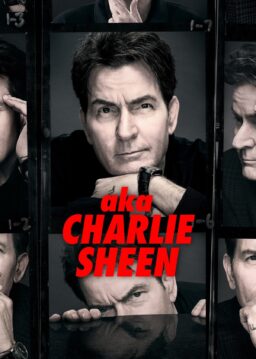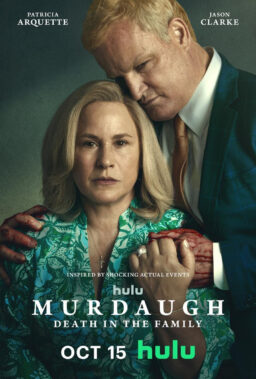Nineteen years after his death, he remains as famous as any director in movie history – even Steven Spielberg. Other directors have had their films remade, but only Alfred Hitchcock made one so monumental that another director, a good one, actually tried to duplicate it, shot by shot. Gus Van Sant‘s “Psycho” (1998) was a bad idea, but it’s the thought that counts.
Hitchcock, who was born on Friday the 13th a century ago today, remains not only the Master of Suspense but a grandmaster of the cinema, whose films are so distinctive that anyone familiar with his work can spot one after just a few shots.
Hitchcock was content, with very few exceptions, to make films about crime and guilt. There are no philosophical statements in his work, except ironic ones. Nothing is ever taken quite seriously. He used big stars, flamboyant locations, audacious camera strategies. By making a cameo appearance near the beginning of almost all of his films, he became personally famous at a time when most people never ever thought about a film’s director. When most serious directors scorned television, he became even more famous with a weekly half hour program, “Alfred Hitchcock Presents.” How well-known did he become? Using only a few curved lines, he was able to draw a caricature of himself that is instantly recognizable.
This case history would seem to add up to a man who was famous in his time but is now perhaps half-scorned, half-forgotten, past his sell-by date (the evolution of Cecil B. de Mille’s reputation comes to mind). But Hitchcock’s stature is as great as it ever was. Witness the controversy over last week’s poll by Sight and Sound, the British film magazine, which asked directors to vote on Hitchcock’s 10 best films. There was outrage when the list did not include “Rebecca,” “Strangers on a Train” and “Rear Window.” And for that matter, where were “Suspicion” and “Spellbound“? (The top 10: “Psycho,” “Vertigo,” “Notorious,” “The Birds,” “North by Northwest,” “Shadow of a Doubt,” “Foreign Correspondent,” “Frenzy,” “The Lady Vanishes” and “Marnie.”) Name another director who could make “Strangers on a Train” and not have it ranked as one of his best 10 films.
Hitchcock’s favorite plot is often summarized as: the Innocent Person Wrongly Accused. From Cary Grant in “North by Northwest” to Ingrid Bergman in “Notorious,” his characters were often blameless but seemed guilty from a certain point of view. In explaining this obsession, Hitchcock never tired of telling the story of how, when he was a young boy who had misbehaved, his father sent him down to a London police station with a note asking the desk sergeant to lock him up to teach him a lesson. Years later, Hitchcock said that on his tombstone he wanted these words: You see what can happen to you if you are not a good boy.
Born in London, Hitchcock broke into silent films as a go-fer, artist and writer. The first of his own films, “The Pleasure Garden,” was shot in Germany at the height of Expressionism, and throughout his career, he liked strange camera angles, dramatic shadows, weird juxtapositions, unexpected visual revelations. His first big hits were “The Man Who Knew Too Much” (1934) and “The 39 Steps” (1935), and after the huge success of “The Lady Vanishes” (1938), he was soon summoned to Hollywood by producer David O. Selznick. Their 1940 production of “Rebecca” won the Oscar as best picture; ironically, it was a macabre romance and did not have the kind of suspense for which Hitchcock was most famous.
The great stars dropped everything to work for Hitchcock. James Stewart and Cary Grant made four films with him. Ingrid Bergman, Joseph Cotten, Joan Fontaine, Henry Fonda, Joel McCrea, Grace Kelly, Kim Novak and Paul Newman appeared in his pictures. He liked to use a big star, he said, “because you can leave out the first reel, which establishes the character; the audience already knows him.” He liked cool blonds (Novak, Kelly, Eva Marie Saint, Tippi Hedren, Janet Leigh) and took delight in disheveling them. His male leads didn’t play rugged but vulnerable, and it took courage for Stewart to display the weaknesses of the wheelchair-bound hero in “Rear Window” and the erotically obsessed man in “Vertigo.”
Fascinated by the technical side of the movies, Hitchcock worked meticulously on his scripts, hiring artists to draw storyboards of every shot; he claimed when the screenplay was finished, it was all downhill. He set himself technical challenges. “Lifeboat” (1944) took place entirely within a small boat, and “Rope” (1948) was knitted together out of unbroken 10- minute takes, so it looked like the whole movie was made in one shot. “Rear Window” (1954) gave Stewart a pair of binoculars and, in a virtuoso sequence, had him piece together a possible murder out of clues glimpsed through windows. In “Psycho” (1960), Hitchcock played with audience expectations by focusing entirely on a big star (Leigh) before killing her off a third of the way through the movie.
“Psycho” was been called the most influential of his films, ushering in the current period of screen violence. His best film was “Vertigo” (1958); it contains a scene where Novak emerges from a ghostly green mist while Stewart watches her. In his face is exaltation: He has re-created the image of the lost woman he is obsessed with. In her face is pain: She is not only the image of that woman, but in fact was that woman, a fact she cannot reveal – because, having cruelly deceived him, she loves him.
The moral and psychological ambiguities of that scene are so complex that you can only cringe, or shiver, or pity them both.











